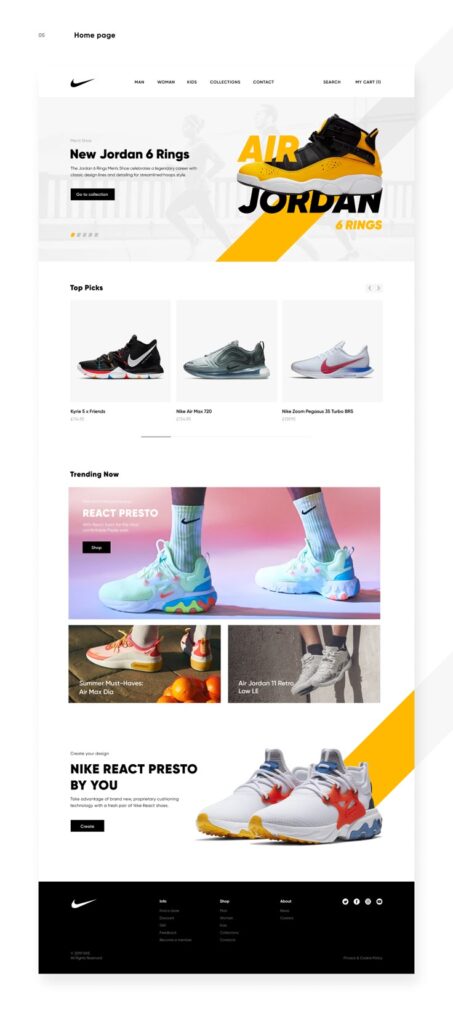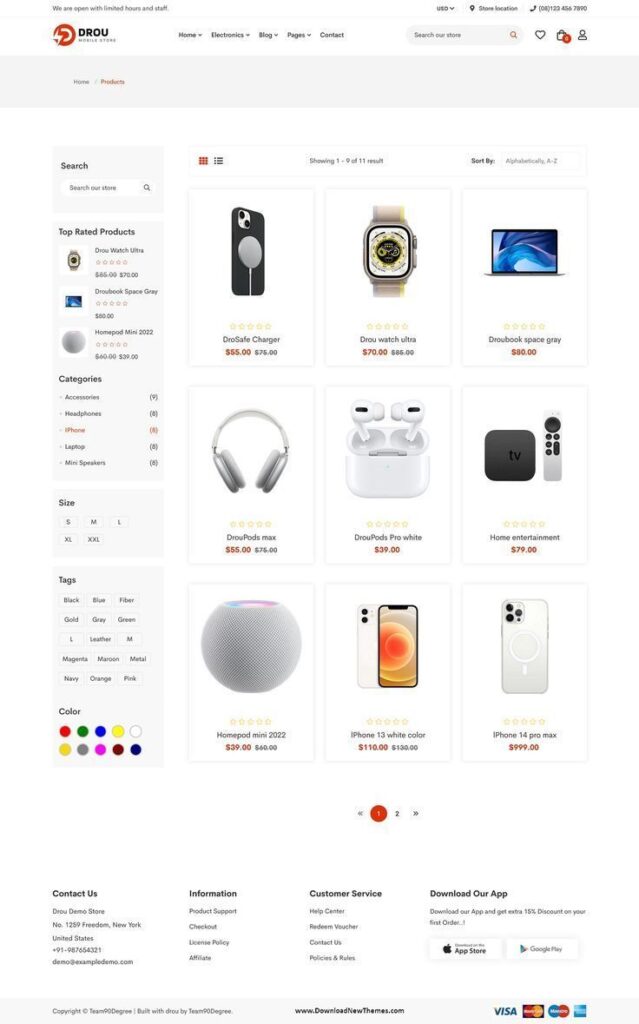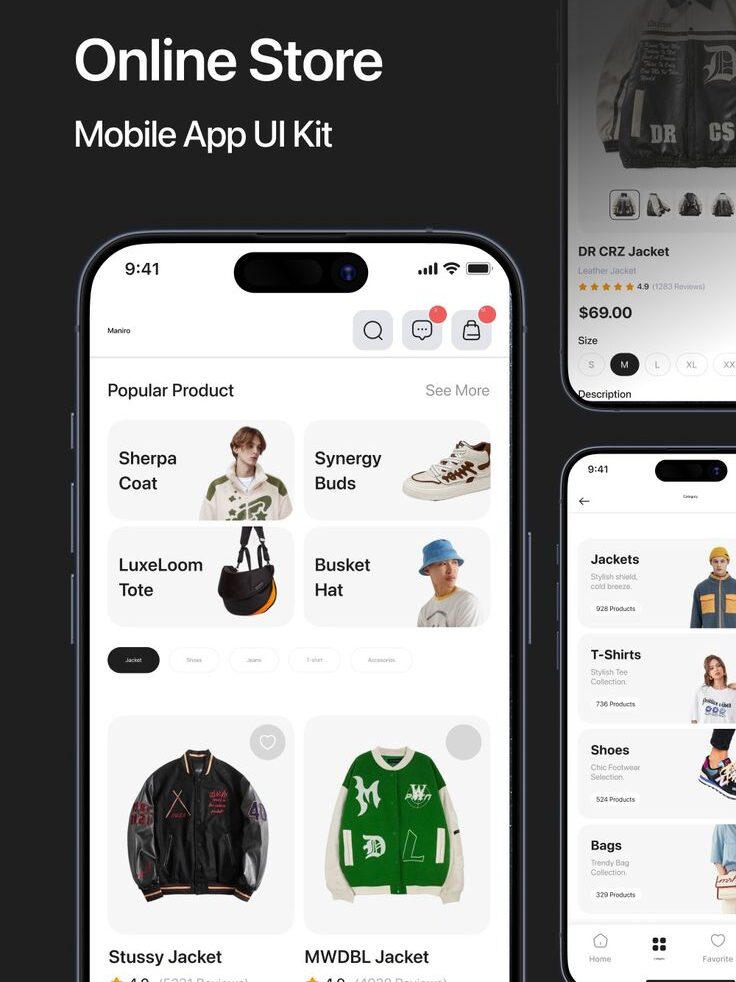E-commerce design plays a crucial role in determining how successfully you attract and retain customers in the online marketplace. A well-structured and visually appealing website enhances user experience, which can significantly boost your conversion rates. Whether you’re starting a new online store or revamping an existing one, understanding the fundamentals of e-commerce design is essential for standing out in a competitive landscape.
Effective e-commerce design encompasses not just aesthetics but also the functionality of your site. It involves creating intuitive navigation and ensuring that your branding resonates with your audience. By focusing on these elements, you can improve product discoverability and make the checkout process seamless, ultimately driving customer satisfaction and loyalty.
Incorporating strategic design practices will empower you to build a site that does more than just display products—it creates an engaging shopping experience. As you explore the world of e-commerce design, you’ll uncover valuable insights that can transform your online presence and elevate your business.
Key Takeaways
- An intuitive site structure improves user experience and boosts conversion rates.
- Strong branding and visual design help differentiate your store from competitors.
- A streamlined checkout process enhances customer satisfaction and retention.


Understanding E-Commerce Fundamentals
A strong understanding of e-commerce fundamentals is vital for building a successful online store. Key areas to focus on include user experience (UX), conversion rate optimization, and usability. Each of these elements plays a crucial role in guiding customers through their purchasing journey.
The Role of User Experience (UX)
User experience significantly impacts how visitors interact with your website. Prioritizing effective UX makes navigation intuitive and enjoyable. A well-structured layout, combined with concise information presentation, helps customers find what they need quickly.
To enhance UX:
- Simplify Navigation: Use clear categories and subcategories for easy browsing.
- Mobile Optimization: Ensure the site is responsive for mobile devices, as many shoppers use smartphones.
- Speed Matters: Optimize loading times. A delay of even a few seconds can lead to increased bounce rates.
Great UX fosters trust and encourages repeat visits.
Optimizing Conversion Rate
Conversion rate is the percentage of visitors who complete a desired action, such as making a purchase. Improving this metric requires a multi-faceted strategy. Begin with a clear value proposition that outlines the benefits of your products.
To boost conversion rates:
- High-Quality Images: Use clear, high-resolution images to showcase products effectively.
- Compelling CTAs: Craft clear and persuasive calls-to-action that prompt users to take the next step.
- A/B Testing: Regularly test changes to layouts, colors, and text to identify what resonates most with your audience.
Increasing conversion rates directly impacts your revenue potential.
Importance of Usability in E-Commerce
Usability is essential in creating an engaging shopping experience. A site that is hard to use will frustrate customers, leading to higher bounce rates. Focus on making your site accessible and user-friendly to foster interactions.
Key aspects of usability include:
- Clear Labels: Ensure that buttons and links have descriptive labels, making it obvious what actions users can take.
- Accessible Search Functionality: Implement a robust search feature that allows users to find products quickly.
- Streamlined Checkout Process: Make the checkout process as straightforward as possible, reducing the number of steps needed to complete a purchase.
By enhancing usability, you can create a more satisfying experience that keeps customers engaged and returning.


Site Structure and Navigational Design
Creating an effective site structure and navigational design is crucial for enhancing the shopping experience. A well-organized layout and intuitive navigation guide users seamlessly through your site, ensuring they can easily find what they need, from new arrivals to specific product pages.
Creating Intuitive Navigation
Intuitive navigation is essential for retaining visitors. It should be clear and straightforward, allowing users to understand how to browse your site without confusion.
Main Menu: Include categories such as Home, Shop, New Arrivals, and Contact Us.
Dropdown Menus: These help to organize subcategories neatly, making it easy for users to explore different product types.
Consistent Layout: Maintain the same structure throughout your site to reinforce familiarity as users navigate.
Clickable Logo: Ensure your site logo links back to the homepage, providing users an easy route back.
A clean and concise navigation aids in reducing bounce rates and enhancing user satisfaction.
Page Layout and Product Placement
Effective page layout directly impacts customer engagement. Strategically placing products can encourage browsing and purchasing.
Grid Layout: Use a grid format on category pages to display multiple products neatly. This allows for easier comparisons and browsing.
Highlight New Arrivals: Position new or featured products prominently to attract attention and encourage immediate exploration.
Clear Call-to-Action: Use buttons like Add to Cart or View Details that are easily visible and accessible, enhancing usability.
Spacing and Organization: Employ sufficient whitespace to prevent clutter, allowing users to focus on individual products without distraction.
An optimal layout encourages users to spend more time on your site and aids in driving conversions.
Implementing Search Functionality
An effective search function improves product discoverability, catering to users who know exactly what they want.
Search Bar Visibility: Place the search bar prominently, typically at the top of the homepage, ensuring ease of access.
Autocomplete Suggestions: Offer suggestions as users type, helping them find products quickly.
Filter and Sort Options: Allow users to filter results by categories, price, or newest items. This enhances their ability to find suitable products.
Search Analytics: Monitor search data to understand user behavior better, allowing you to optimize product placement and navigation based on actual usage patterns.
Robust search functionality ensures that customers can locate products efficiently, enhancing the overall shopping experience.


Strengthening Branding and Visual Appeal
Creating a strong visual appeal in e-commerce design reinforces your brand’s identity. Key elements include consistent branding, minimalist design, and high-quality product images, all of which play a vital role in attracting and retaining customers.
Employing Consistent Branding
Consistent branding strengthens your identity across all platforms. Use the same color schemes, typography, and logos on your website and social media. This uniformity helps customers easily recognize your brand.
Consider creating a brand guideline document to cover all aspects of visual identity. This should include logo usage, color palettes, and font selections. By adhering to these guidelines, you maintain a cohesive look that tells a compelling brand story.
Choosing a Minimalist Design
A minimalist design can enhance user experience by removing clutter and focusing attention on key elements. Prioritize essential content that drives conversions, like product descriptions and call-to-action buttons.
Utilizing ample white space allows for easy navigation and gives products room to stand out. Keep your layout intuitive and straightforward. This not only elevates the aesthetic but also reduces bounce rates, as users can quickly find what they need.
Incorporating High-Quality Product Images
High-quality product images are crucial for e-commerce success. They provide customers with a clear view of what they’re buying, which builds trust and encourages purchases. Use professional photography to showcase products in an appealing way.
Consider using multiple angles and zoomed-in shots to give a comprehensive view. Implement image optimization techniques to enhance loading times without compromising quality. This ensures that your site remains user-friendly while showcasing your products effectively.


Improving the Checkout Experience
Enhancing the checkout experience directly impacts your conversion rates and customer satisfaction. Focus on simplifying the process while addressing common barriers that lead to cart abandonment.
Simplifying the Checkout Process
A streamlined checkout process is vital for keeping customers engaged. Start by reducing the number of steps required to complete a purchase. Aim for a single-page checkout design where possible, allowing customers to enter shipping and payment information without navigating multiple screens.
Utilizing auto-fill features for address and payment details can significantly speed up the process. Additionally, clear labeling of form fields and buttons can minimize confusion. Visual cues such as progress indicators can also guide users, providing a sense of direction throughout the checkout flow.
Reducing Cart Abandonment
Cart abandonment remains a critical challenge for e-commerce. To decrease abandonment rates, address common concerns that deter customers. Implement trust signals such as security badges and clear return policies to reassure buyers.
Sending reminder emails to users who leave items in their shopping cart can recapture lost sales. Offering limited-time discounts or free shipping for completing the purchase can further incentivize customers. Additionally, analyzing your abandonment rates can help identify specific points in the checkout process where users drop off, allowing targeted improvements.
Offering Guest Checkout Option
Providing a guest checkout option is essential for accommodating varying customer preferences. Many shoppers prefer not to create an account, which can cause frustration and lead to abandoned carts. By allowing guest checkouts, you enable users to complete their purchases quickly and with minimal hassle.
Encourage account creation post-purchase by highlighting the benefits, such as tracking orders and storing payment information for future use. This strategy balances the need for data collection with the desire for straightforward transactions, creating a more user-friendly experience.


Enhancing Product Discoverability and Descriptions
Effective product discoverability and well-crafted product descriptions are critical to improving customer engagement and sales. You can enhance your e-commerce site by focusing on how products are presented and the information provided to potential buyers.
Creating Compelling Product Descriptions
Compelling product descriptions play a vital role in attracting customers. Begin with clear, concise language that highlights key features, benefits, and specifications. Use bullet points for easy readability and to emphasize crucial information.
Incorporate personalization elements by addressing potential customer needs. Consider your target audience’s preferences and pain points. Use descriptive language that paints a vivid picture of how the product fits into their lifestyle. Additionally, integrating SEO keywords will help improve the visibility of your products in search engines.
Leveraging Customer Reviews and Ratings
User reviews and ratings can significantly impact product discoverability. They build trust and can influence purchasing decisions. Encourage customers to leave reviews after their purchase. This not only enhances social proof but also provides valuable content for new visitors.
Feature top-rated products prominently on your site. You can create a “Most Loved” or “Top Picks” section to highlight these items. Integrate a sorting feature that allows users to filter products by customer ratings, making it easier for them to find trusted options.
Utilizing Upselling Techniques
Upselling is an effective strategy to increase your average order value. Suggest complementary products that enhance the main item customers are viewing. For example, if a customer is looking at a camera, recommend lenses or carrying cases.
Implement features like “Customers also bought” or “Frequently bought together” sections on product pages. This not only aids discoverability but also encourages customers to explore additional offerings. Ensure that upselling suggestions are personalized based on customer behavior and preferences to improve effectiveness.


Maximizing Engagement and Retention
Engagement and retention are crucial for e-commerce success. Effective strategies involve tailoring experiences to your customers, motivating actions through calls-to-action, and enticing purchases with discounts and promotions.
Utilizing Personalization Strategies
Personalization is essential for creating a unique shopping experience. You can enhance customer relations by utilizing data to offer tailored recommendations. Use browsing history and previous purchases to suggest products directly related to customer preferences.
Consider implementing personalized email campaigns to reconnect with customers. Personalized emails, based on previous interactions, can significantly increase open and conversion rates. For instance, remind customers of items left in their cart or send tailored newsletters featuring products they may like.
Furthermore, allow customers to customize their shopping experience. Offer options such as preferred payment methods, shipping options, and even personalized gift wrapping. This approach makes customers feel valued and understood.
Incorporating Effective Calls-to-Action
Strong calls-to-action (CTAs) are vital for guiding users toward desired actions. Use clear and compelling language in your CTAs to encourage clicks. Phrases like “Shop Now,” “Get Your Discount,” or “Sign Up for Exclusive Offers” create urgency and foster immediate responses.
Position your CTAs strategically within your website. Place them prominently on product pages and at the end of blog posts to maximize visibility. Use contrasting colors and distinct buttons to draw attention. A/B testing different CTAs can help you understand which phrases and placements resonate best with your audience.
Additionally, ensure CTAs are aligned with customer expectations. When users receive an email about a sale, a direct link to that sale with a strong CTA will provide a seamless experience.
Offering Discounts and Promotions
Discounts and promotions can effectively boost engagement and retention. Create limited-time offers to create a sense of urgency. Use countdown timers on your website to visually remind customers of the ticking clock.
Loyalty programs are another effective tactic. Offering discounts based on customers’ purchase history not only incentivizes repeat purchases but also fosters a sense of belonging. For instance, “Spend $100 and get 20% off your next order” encourages customers to return.
Incorporate seasonal promotions to align with customer shopping habits. Events like Black Friday or holidays provide excellent opportunities to entice customers with special deals. Use targeted marketing to inform your base about these promotions, making sure the offers are relevant and attractive.
- 56shares
- Facebook0
- Pinterest56
- Twitter0



